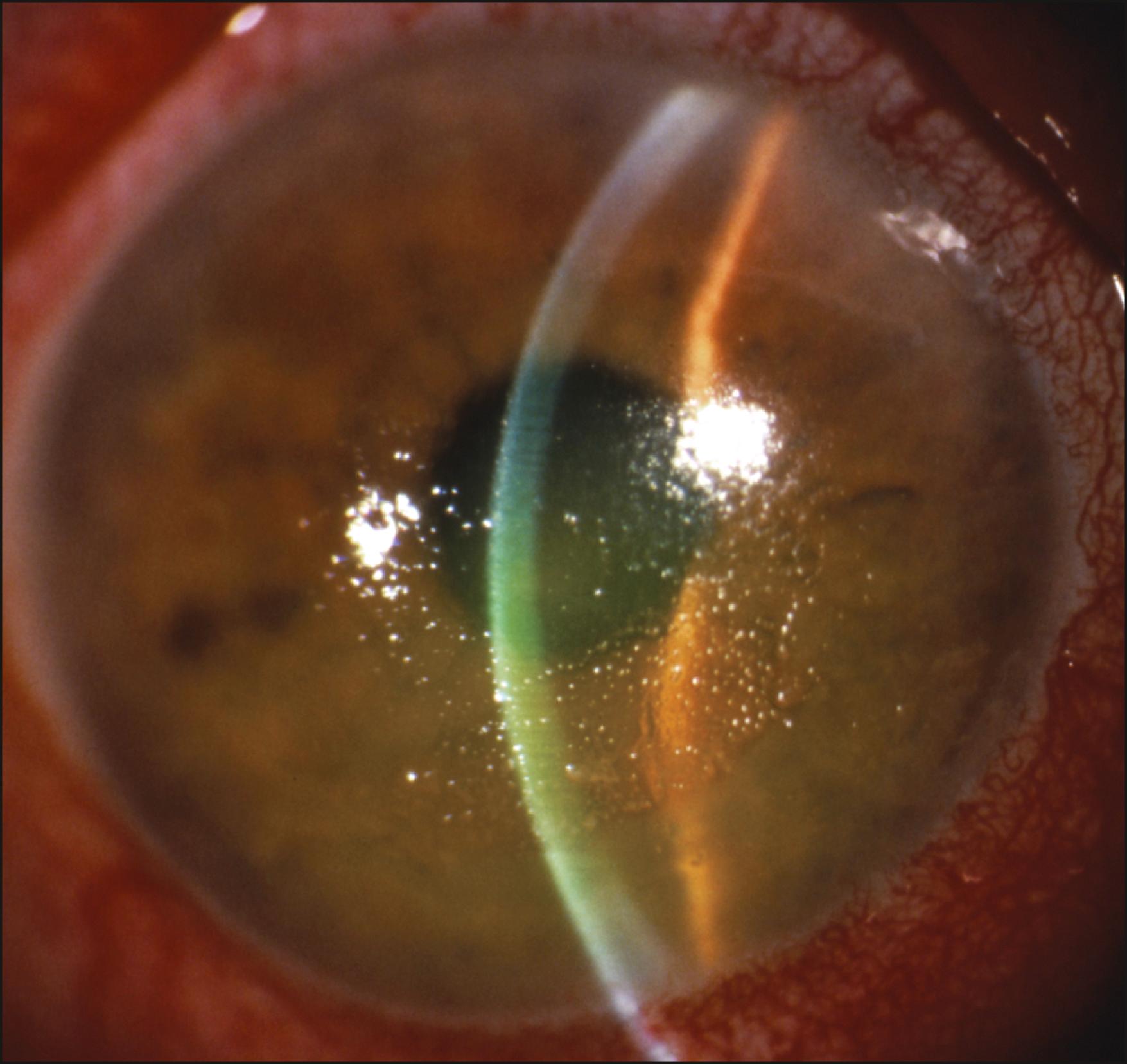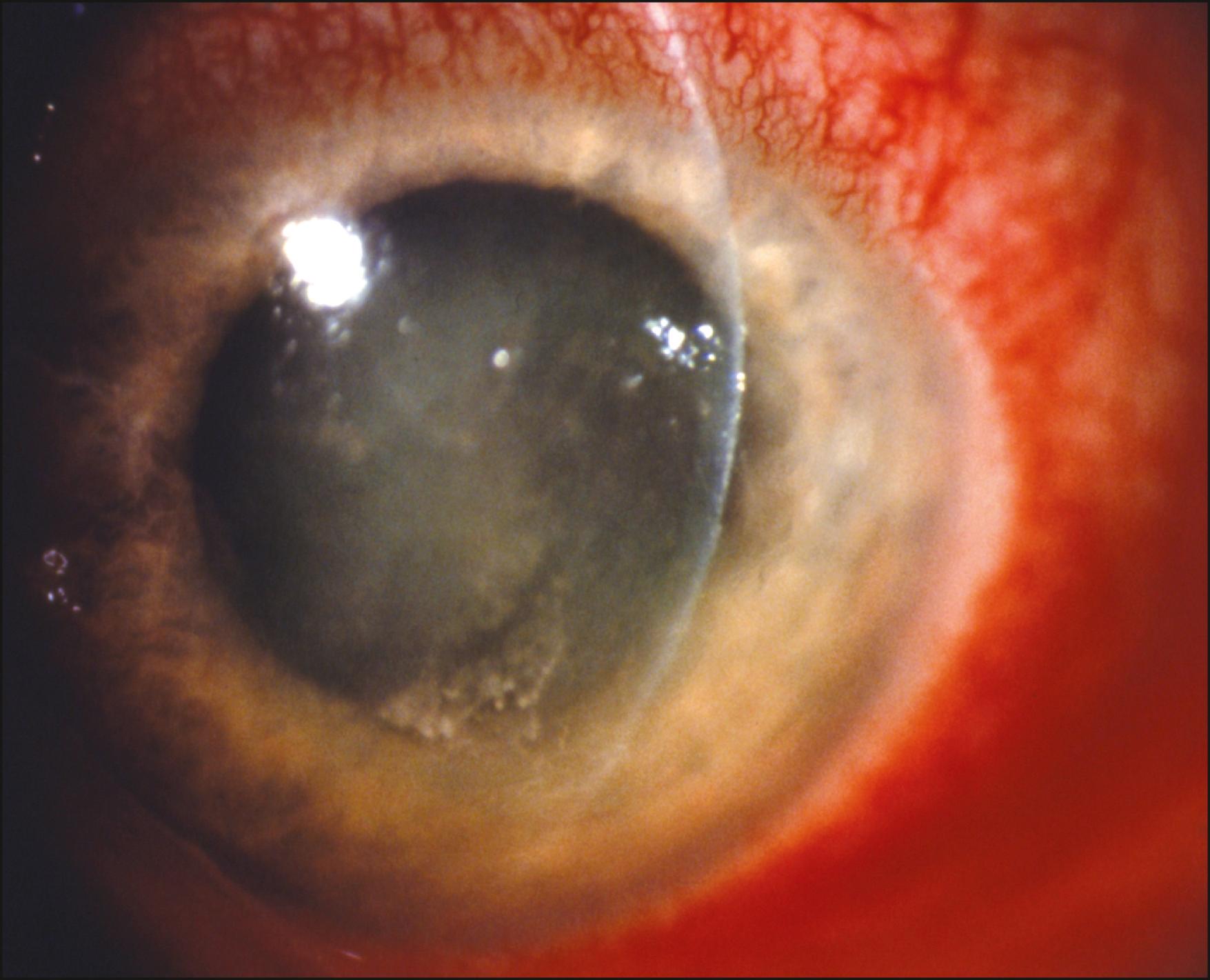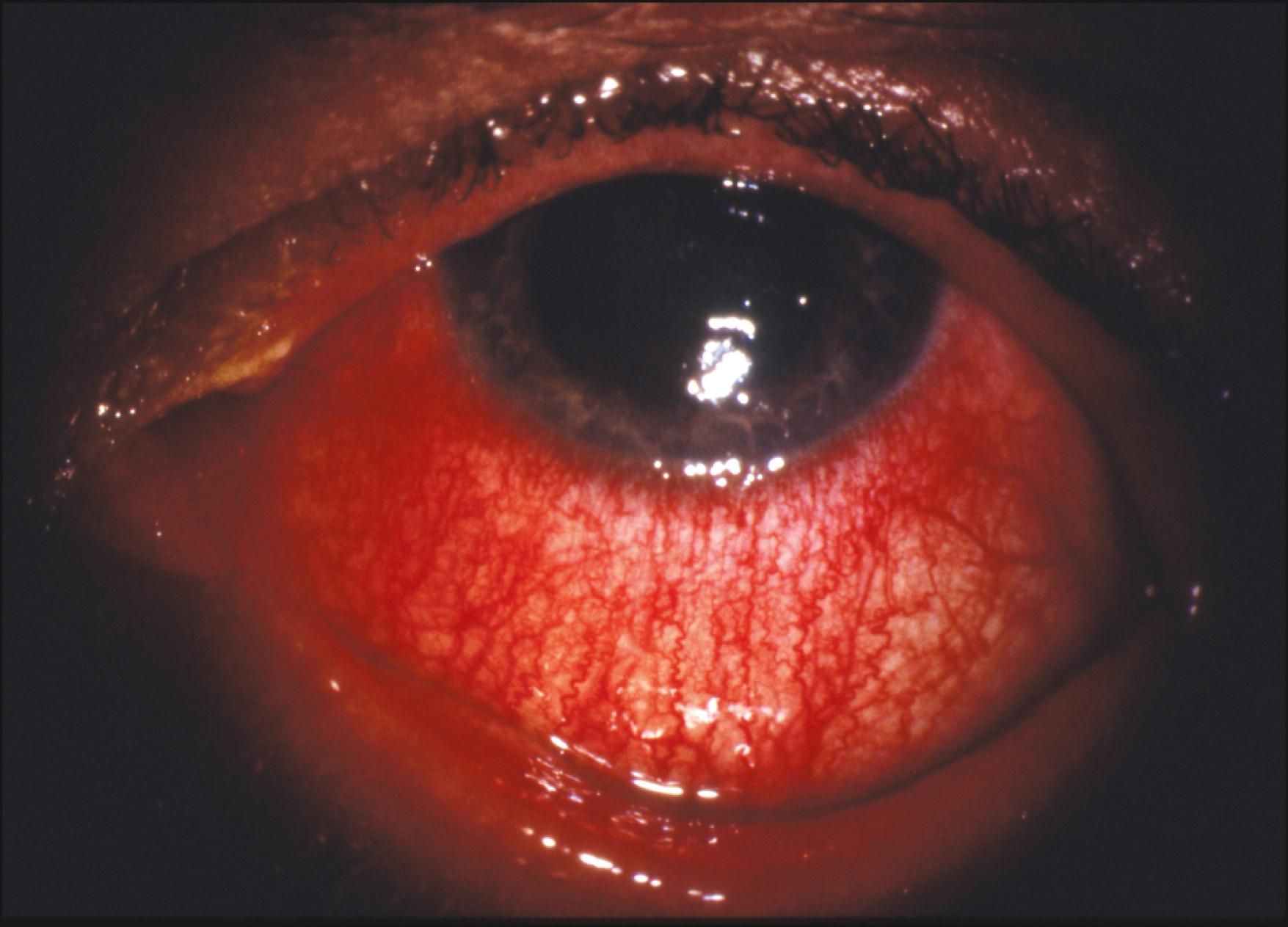Physical Address
304 North Cardinal St.
Dorchester Center, MA 02124
Toxic conjunctivitis is a potentially sight-threatening condition that must be recognized and managed appropriately.
Toxic conjunctivitis as a result of ophthalmic medications can be clinically difficult to distinguish from allergic conjunctivitis.
Careful clinical examination can provide diagnostic cues to the presence of toxic reactions to ophthalmic medications.
The appearance of toxic reactions to ophthalmic medications can range from mild surface irritation to pseudopemphigoid appearance of the conjunctiva, corneal ulceration, and scarring.
Often discontinuing the offending agent can prove curative, but additional supportive and surgical measures may be necessary to treat the insult.
Toxic conjunctivitis has been known since antiquity, but descriptions of this entity were not typical until a case of keratoconjunctivitis caused by topical atropine was described by Von Graefe in 1864. This chapter reviews the subject of toxic keratoconjunctivitis primarily due to the use of topical ophthalmic preparations. Other causes of toxic keratoconjunctivitis are also mentioned here, including cosmetics, hair care products, tear gas weapons, and industrial chemical exposures. Chemotherapeutic agents are also known to cause keratoconjunctivitis but will not be covered in this chapter.
Topical medications can confuse the clinical picture of ocular surface irritation. Patients are often helped by the use of medications initially, but continued use appears to worsen the condition being treated as a result of toxicity. This poses a quandary for the clinician as to whether signs and symptoms are due to the worsening underlying disease process or to medication toxicity. Very often, both toxic and allergic mechanisms are active to varying degrees, depending on the frequency, duration, and strength of the medication. However, certain characteristics of the allergic and toxic reactions help to distinguish the two in most situations in which one or the other is dominant.
Toxicity implies damage to the structure of the ocular tissues, or disturbance of function, with or without an accompanying inflammatory response. This damage may occur as a direct result of the drug itself, the accompanying preservatives, or from breakdown products of the drug.
Allergic reactions may be of the anaphylactoid (type I) or of the delayed (type IV) hypersensitivity type. The type I reaction is characterized by the union of allergen, IgE antibody, and mast cells, leading to the degranulation of the mast cell and the release of multiple mediators, including histamine, various chemotactic factors, and others. These mediators are responsible for the signs and symptoms of an acute allergic reaction. In the delayed hypersensitivity reaction, drugs act as haptens that conjugate with proteins. This conjugate combines with T lymphocytes, leading to the elaboration of various lymphokines, which mediate the inflammatory response.
In general, allergic reactions are characterized by chronicity. Repeated exposure to the agent and adequate sensitization time are needed for the reaction to develop. The development of this reaction may require an amount of time ranging from days to years. On the other hand, a toxic reaction, though also often requiring repeated exposure, may occur with the first exposure to the agent.
Conjunctival redness, chemosis, lid or periorbital swelling, mucous discharge, papillary palpebral conjunctival reaction, and itching are common manifestations of an allergy. Itching may be the strongest indication of allergic conjunctivitis. Many of the available topical medications may cause this type of reaction, perhaps the most common being idoxuridine (IDU), gentamicin, atropine, and neomycin. ,
In allergic conjunctivitis, a papillary reaction of the tarsal conjunctiva may occur, as well as a milky chemosis with hyperemia. Papillary reactions are common in toxic conjunctivitis also, but in addition, a follicular component may be present. Follicles are generally not seen in allergy alone and may be a key sign suggesting toxicity. Table 47.1 lists medications associated with follicular conjunctivitis. ,
| Physostigmine | Demecarium |
| Echothiophate | Isoflurophate |
| Diisopropylfluorophosphate | Gentamicin |
| Neostigmine | Framycetin |
| Furtrethonium iodide | Neomycin |
| Pilocarpine | Sulfacetamide |
| Atropine | Sulfamethizole |
| Idoxuridine | Sulfisoxazole |
| Apraclonidine | Amphotericin B |
| Brimonidine | Scopolamine |
| Carbachol | Diatrizoate |
| Epinephrine | Hyaluronidase |
| Dipivefrin | Meglumine |
In addition, the hyperemia and chemosis that may occur with toxicity may not be as diffusely distributed on the bulbar conjunctiva as in the allergic reaction, but may spare the superior aspect relatively. It is often more prominent in the inferonasal cornea and conjunctiva from the natural Bell phenomena and the locus of the direct placement of topical drops ( Figs. 47.1–47.3 ).



Allergic conjunctivitis is often associated with a mucous discharge that is typically thin and clear. A more purulent or mucopurulent discharge may be associated with toxicity.
The cornea in allergic conjunctivitis is often unaffected or may show punctate staining with fluorescein, more prominent inferiorly. The cornea in toxic reactions, on the other hand, may demonstrate a broad range of involvement, from mild punctate keratitis to severe ulcerative keratopathy. As described by Wilson, the most common manifestations are coarse and punctate epithelial lesions. Heaps and swirls of opaque epithelium may occur as well, which may lead to large erosions. Pseudodendrites may develop, resembling herpetic dendrites. Schwab and Abbott emphasized the importance of the largely unrecognized problem of toxic ulcerative keratopathy. They described a series of patients with similar findings secondary to inappropriate use of topical medications, including anesthetic abuse. All of these patients had oval epithelial defects located primarily in the inferonasal quadrants, with coarse surrounding keratitis, resembling a “comet’s impact” crater (see Fig. 47.1 ). Mucous threads, intense ciliary flush, papillary tarsal response, chemosis, and marked inferior or inferonasal injection were also common (see Figs. 47.1–47.3 ). The epithelial defects typically demonstrate rolled, but not heaped, margins. These findings were observed in patients with iatrogenic toxic keratopathy as well as in factitious, self-induced keratoconjunctivitis.
Various clinical tests are available, although not often performed, which may help to distinguish allergy from toxicity. The standard clinical test for the diagnosis of type I hypersensitivity is the intradermal skin test, in which injection of the agent intradermally elicits a wheal and flare reaction within seconds or minutes. The ocular equivalent of this—application of the substance into the conjunctival fornix—may yield a positive result with immediate chemosis, hyperemia, itching, and eyelid swelling. The standard test for type IV hypersensitivity, or contact dermatitis, is the patch test. Here, the substance is applied to the skin and covered. Examination of the skin 24–48 hours later may reveal a contact dermatitis if positive. However, false negatives and false positives may both occur, and a careful history is often more helpful in making this diagnosis. Conjunctival scrapings may show eosinophils in allergic conjunctivitis and not in toxic reactions. In addition, large toxic granules may be present in the cytoplasm of epithelial, mononuclear, and polymorphonuclear cells. These are large basophilic granules that differ from the usual smaller neutrophilic granules. However, they are not specific for toxicity and may be found in allergic responses as well.
Topical medications of all therapeutic categories may cause external ocular irritation, either from the direct effect of an active chemical or from degradation products and preservatives. Topical drugs produce higher concentrations in the cornea and conjunctiva than in the other ocular tissues and may more easily affect the function and structure of the epithelial cells adversely.
Become a Clinical Tree membership for Full access and enjoy Unlimited articles
If you are a member. Log in here